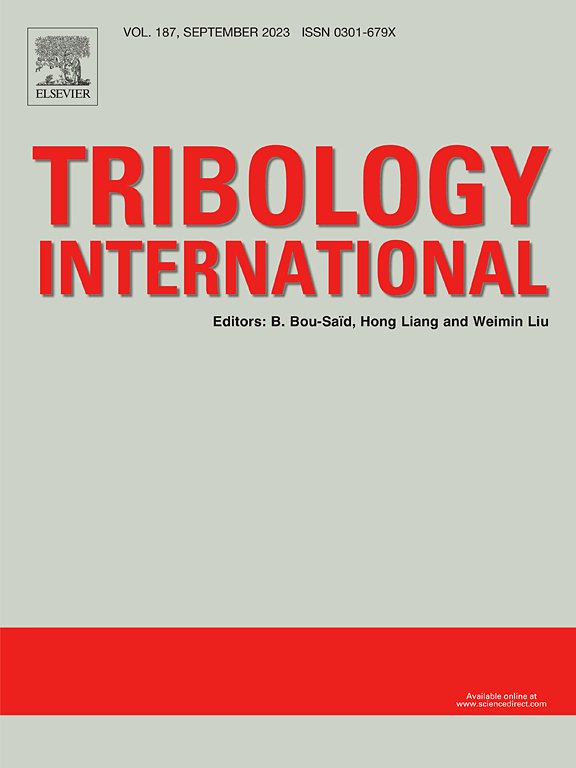铜金属基复合材料在高温连续滑动条件下的摩擦响应和表面演变
IF 6.1
1区 工程技术
Q1 ENGINEERING, MECHANICAL
引用次数: 0
摘要
本文章由计算机程序翻译,如有差异,请以英文原文为准。
Tribological response and surface evolution of copper metal matrix composites under continuous sliding conditions at elevated temperatures
Temperature rise is a salient characteristic of friction brakes during continuous braking, and may cause undesirable changes to the performance of friction materials. New insights are put forward here regarding the evolution of frictional behavior and tribological mechanisms of copper metal matrix composites (Cu-MMCs) under continuous sliding conditions at 600 and 800 ℃. The friction coefficients exhibit clear trends across three distinct stages at two temperatures during continuous sliding. At 600 ℃, the wear rate of Cu-MMC increases noticeably with an increase in the sliding time, the friction coefficient initially increases, then experiences a slight decrease, and eventually stabilizes. The wear mechanisms of Cu-MMC evolve from slight adhesive wear, abrasive wear and oxidative wear to mild adhesive wear, oxidative wear and severe abrasive wear. At 800 ℃, as sliding time increases, the friction coefficient decreases sharply at the beginning of sliding, and subsequently stabilizes. The wear rate of Cu-MMC decreases notably with increasing sliding time. The wear mechanisms of Cu-MMC transition from severe abrasive wear, adhesive wear, and oxidative wear to delamination, oxidative wear and mild abrasive wear.
求助全文
通过发布文献求助,成功后即可免费获取论文全文。
去求助
来源期刊

Tribology International
工程技术-工程:机械
CiteScore
10.10
自引率
16.10%
发文量
627
审稿时长
35 days
期刊介绍:
Tribology is the science of rubbing surfaces and contributes to every facet of our everyday life, from live cell friction to engine lubrication and seismology. As such tribology is truly multidisciplinary and this extraordinary breadth of scientific interest is reflected in the scope of Tribology International.
Tribology International seeks to publish original research papers of the highest scientific quality to provide an archival resource for scientists from all backgrounds. Written contributions are invited reporting experimental and modelling studies both in established areas of tribology and emerging fields. Scientific topics include the physics or chemistry of tribo-surfaces, bio-tribology, surface engineering and materials, contact mechanics, nano-tribology, lubricants and hydrodynamic lubrication.
 求助内容:
求助内容: 应助结果提醒方式:
应助结果提醒方式:


